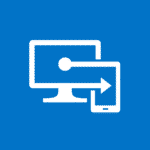check before: 2023-01-26
Product:
Azure Active Directory, Entra, Entra ID, Microsoft 365 Apps, Outlook, Teams
Platform:
Android, Developer, iOS, mobile, World tenant
Status:
Launched
Change type:
Admin impact, New feature, Updated message, User impact
Links:

Details:
Updated January 31, 2023: We have updated the rollout timeline below. Thank you for your patience.
Shared device mode is a feature of Azure Active Directory that allows you to use applications that support frontline workers and enable shared device mode on the devices deployed to them.
Your frontline workers can preview Outlook on their shared Android devices until full rollout begins. Enabling frontline worker workflows includes challenges not usually presented by typical information workers. Such challenges can include high turnover rate and less familiarity with an organization's core productivity tools. To empower their frontline workers, organizations are adopting different strategies. Some are adopting a bring-your-own-device (BYOD) strategy in which their employees use business apps on their personal phone, while others provide their employees with shared devices like iPads or Android tablets.
This message is associated with Microsoft 365 Roadmap ID 107506
[When this will happen:]
Public Preview will be rolling out in mid-February (previously mid-January 2023).
General Availability will be rolling out in mid-June 2023 and is expected to be complete by mid-July 2023.
Because mobile devices running iOS or Android were designed for single users, most applications optimize their experience for use by a single user. Part of this optimized experience means enabling single sign-on across applications and keeping users signed in on their device. When a user removes their account from an application, the app typically doesn't consider it a security-related event. Many apps even keep a user's credentials around for quick sign-in.
To allow an organization's employees to use its apps across a pool of devices shared by those employees, developers need to enable the opposite experience. Azure Active Directory will enable the following scenarios with the shared device mode features:
Employees will have the ability to pick a device from the pool and "make it theirs" for the duration of their shift.
At the end of their shift, employees can sign out globally on the device, with all of their personal and company information removed so they can return it to the device pool.
If an employee forgets to sign out, the device will automatically be signed out at the end of their shift and/or after a period of inactivity.
Change Category:
XXXXXXX ...
Scope:
XXXXXXX ...
Release Phase:
General Availability, Preview
Created:
2023-01-12
updated:
2023-07-15
the free basic plan is required to see all details. Sign up here
A cloudsocut.one plan is required to see all the changed details. If you are already a customer, choose login.
If you are new to cloudscout.one please choose a plan.

changes*
| Date | Property | old | new |
| 2023-07-15 | MC Messages | Updated January 31, 2023: We have updated the rollout timeline below. Thank you for your patience.
Shared device mode is a feature of Azure Active Directory that allows you to use applications that support frontline workers and enable shared device mode on the devices deployed to them. Your frontline workers can preview Outlook on their shared Android devices until full rollout begins. Enabling frontline worker workflows includes challenges not usually presented by typical information workers. Such challenges can include high turnover rate and less familiarity with an organization's core productivity tools. To empower their frontline workers, organizations are adopting different strategies. Some are adopting a bring-your-own-device (BYOD) strategy in which their employees use business apps on their personal phone, while others provide their employees with shared devices like iPads or Android tablets. This message is associated with Microsoft 365 Roadmap ID 107506 [When this will happen:] Public Preview will be rolling out in mid-February (previously mid-January 2023). General Availability will be rolling out in mid-June 2023 and is expected to be complete by mid-July 2023. Because mobile devices running iOS or Android were designed for single users, most applications optimize their experience for use by a single user. Part of this optimized experience means enabling single sign-on across applications and keeping users signed in on their device. When a user removes their account from an application, the app typically doesn't consider it a security-related event. Many apps even keep a user's credentials around for quick sign-in. To allow an organization's employees to use its apps across a pool of devices shared by those employees, developers need to enable the opposite experience. Azure Active Directory will enable the following scenarios with the shared device mode features: Employees will have the ability to pick a device from the pool and "make it theirs" for the duration of their shift. At the end of their shift, employees can sign out globally on the device, with all of their personal and company information removed so they can return it to the device pool. If an employee forgets to sign out, the device will automatically be signed out at the end of their shift and/or after a period of inactivity. | Updated January 31, 2023: We have updated the rollout timeline below. Thank you for your patience.
Shared device mode is a feature of Azure Active Directory that allows you to use applications that support frontline workers and enable shared device mode on the devices deployed to them. Your frontline workers can preview Outlook on their shared Android devices until full rollout begins. Enabling frontline worker workflows includes challenges not usually presented by typical information workers. Such challenges can include high turnover rate and less familiarity with an organization's core productivity tools. To empower their frontline workers, organizations are adopting different strategies. Some are adopting a bring-your-own-device (BYOD) strategy in which their employees use business apps on their personal phone, while others provide their employees with shared devices like iPads or Android tablets. |
| 2023-07-15 | MC How Affect | t the end of their shift, employees can sign out globally on the device, with all of their personal and company information removed so they can return it to the device pool.
If an employee forgets to sign out, the device will automatically be signed out at the end of their shift and/or after a period of inactivity. | |
| 2023-02-01 | MC Messages | Shared device mode is a feature of Azure Active Directory that allows you to use applications that support frontline workers and enable shared device mode on the devices deployed to them
Your frontline workers can preview Outlook on their shared Android devices until full rollout begins. Enabling frontline worker workflows includes challenges not usually presented by typical information workers. Such challenges can include high turnover rate and less familiarity with an organization's core productivity tools. To empower their frontline workers, organizations are adopting different strategies. Some are adopting a bring-your-own-device (BYOD) strategy in which their employees use business apps on their personal phone, while others provide their employees with shared devices like iPads or Android tablets. This message is associated with Microsoft 365 Roadmap ID 107506 [When this will happen:] Public Preview will be rolling out in mid-January 2023. General Availability will be rolling out in mid-June 2023 and is expected to be complete by mid-July 2023. Because mobile devices running iOS or Android were designed for single users, most applications optimize their experience for use by a single user. Part of this optimized experience means enabling single sign-on across applications and keeping users signed in on their device. When a user removes their account from an application, the app typically doesn't consider it a security-related event. Many apps even keep a user's credentials around for quick sign-in. To allow an organization's employees to use its apps across a pool of devices shared by those employees, developers need to enable the opposite experience. Azure Active Directory will enable the following scenarios with the shared device mode features: Employees will have the ability to pick a device from the pool and "make it theirs" for the duration of their shift. At the end of their shift, employees can sign out globally on the device, with all of their personal and company information removed so they can return it to the device pool. If an employee forgets to sign out, the device will automatically be signed out at the end of their shift and/or after a period of inactivity. | Updated January 31, 2023: We have updated the rollout timeline below. Thank you for your patience.
Shared device mode is a feature of Azure Active Directory that allows you to use applications that support frontline workers and enable shared device mode on the devices deployed to them. Your frontline workers can preview Outlook on their shared Android devices until full rollout begins. Enabling frontline worker workflows includes challenges not usually presented by typical information workers. Such challenges can include high turnover rate and less familiarity with an organization's core productivity tools. To empower their frontline workers, organizations are adopting different strategies. Some are adopting a bring-your-own-device (BYOD) strategy in which their employees use business apps on their personal phone, while others provide their employees with shared devices like iPads or Android tablets. This message is associated with Microsoft 365 Roadmap ID 107506 [When this will happen:] Public Preview will be rolling out in mid-February (previously mid-January 2023). General Availability will be rolling out in mid-June 2023 and is expected to be complete by mid-July 2023. Because mobile devices running iOS or Android were designed for single users, most applications optimize their experience for use by a single user. Part of this optimized experience means enabling single sign-on across applications and keeping users signed in on their device. When a user removes their account from an application, the app typically doesn't consider it a security-related event. Many apps even keep a user's credentials around for quick sign-in. To allow an organization's employees to use its apps across a pool of devices shared by those employees, developers need to enable the opposite experience. Azure Active Directory will enable the following scenarios with the shared device mode features: Employees will have the ability to pick a device from the pool and "make it theirs" for the duration of their shift. At the end of their shift, employees can sign out globally on the device, with all of their personal and company information removed so they can return it to the device pool. If an employee forgets to sign out, the device will automatically be signed out at the end of their shift and/or after a period of inactivity. |
| 2023-02-01 | MC Title | Shared Device Mode for Outlook Mobile on Android | (Updated) Shared Device Mode for Outlook Mobile on Android |
| 2023-02-01 | MC Last Updated | 01/12/2023 02:11:04 | 2023-01-31T21:49:03Z |
| 2023-02-01 | MC MessageTagNames | New feature, User impact, Admin impact | Updated message, New feature, User impact, Admin impact |
*starting April 2022
Last updated 4 months ago






